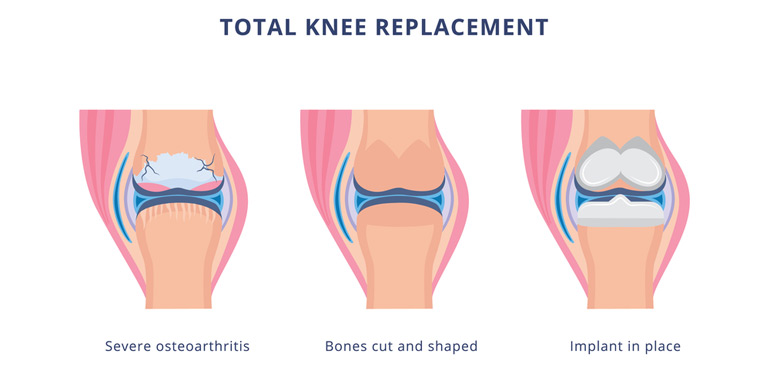A Guide to Total Knee Replacement
Imagine a life free from knee pain. The ability to walk, run, and climb without limitations - these simple joys can become distant memories when knee pain takes hold. But there's hope. Total knee replacement (TKR) surgery can be a game-changer, offering a path back to an active life.
Understanding Total Knee Replacement
Total knee replacement surgery aims to replace the worn-out surfaces of the knee joint with artificial implants, restoring function and alleviating pain. During the procedure, the surgeon removes damaged cartilage and bone from the femur (thigh bone), tibia (shin bone), and sometimes the backside of the kneecap (patella).
These are then replaced with prosthetic components made of durable materials like metal and high-density plastic, replicating the natural joint and restoring smooth movement.
Who Needs Total Knee Replacement?
Several conditions can necessitate total knee replacement surgery. The most common culprit is:
Severe Osteoarthritis: This degenerative joint disease causes the breakdown of cartilage, leading to pain, stiffness, and bone spurs in the knee. When conservative treatments like medication and physical therapy fail to provide adequate relief, TKR becomes a viable option.
Other conditions that might lead to TKR surgery include:
- Rheumatoid Arthritis: An autoimmune disease that can damage the knee joint and surrounding tissues.
- Post-traumatic Arthritis: Arthritis develops following a knee injury, such as a fracture or ligament tear.
- Severe Knee Deformity: Significant bowing in the legs (varus) or knock-knee alignment (valgus) can cause pain and may benefit from TKR to correct the deformity and improve function.
Benefits Of Total Knee Replacement
Total knee replacement surgery offers a multitude of benefits for patients experiencing chronic knee pain and limitations:
- Significant Pain Relief: Reduced pain and stiffness in the knee joint is a primary goal, dramatically improving quality of life.
- Enhanced Mobility: Increased ability to walk, climb stairs, and participate in daily activities with greater ease and confidence.
- Improved Function: Restored range of motion and flexibility in the knee joint allows for a wider range of movement without limitations.
- Increased Independence: Regaining the ability to perform daily tasks without assistance fosters a sense of self-reliance and improved overall well-being.









